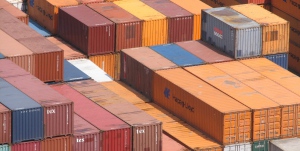Two new ports in Tanzania and Kenya will shift the balance of trade in Africa away from South Africa, says Tristan Wiggill.
East Africa is an import destination, with Kenya and Tanzania both being gateways into the East African Community (EAC). Huge infrastructure developments are currently underway, with both countries preparing new ports to meet rising trade volumes.
There are several mines to the west of Tanzania and much economic activity surrounds these areas. Kenya is receiving significant funding for infrastructure projects and while terrorism is an ongoing threat, it is not slowing investment.
Vibrant
“Nairobi is vibrant,” says Basil Pietersen, owner of Multimodal Logistics Solutions. “The freight forwarding industry in the region is well supported by the government and both the industry and country understand their respective roles in trade facilitation. Customs and duties organisations are also supported and enjoy a good relationship with the Minister of Finance and other key trade facilitators.”
Many restrictions on freight forwarders have also been removed. “Four or five years ago, freight forwarding was a governmental thing, it was not a private-sector function,” Pietersen explains. “The existing ports in Dar es Salaam and Mombasa are fairly efficient, if not world-leading, but are both hampered by congestion caused by their capacity constraints. With effective clearing agents, each is able to function at an acceptable level. Delays are not so bad as to be limiting and each is well-equipped in terms of operational infrastructure,” he says.
Landlocked Uganda plays a critically important role in the EAC region, acting as a gateway into the Democratic Republic of Congo (DRC). “In the past, there was only one route into the DRC for traders but, today, there are several options,” Pietersen notes.
Rough diamond
According to Pietersen, the real gem in East Africa is Ethiopia, which, he says, is booming at the moment. It is a view shared by the World Bank. “If you’re lucky enough to visit Addis Ababa, you’ll see that it is essentially one ginormous crane-site. A number of UN agencies have moved in and Chinese organisations are rapidly constructing new roads and bridges. The mining industry is really taking off and there is a huge drive to generate power. Ethiopia is a populous country, home to over 90 million people. There are opportunities for South African companies to export mining equipment and related supplies.”
The ‘new’ Suez Canal now accommodates two-way traffic, which is of major benefit to countries like Ethiopia and Djibouti.
Freight forwarders would likely decide to move goods to Ethiopia from South Africa by sea-going vessel as it is easy and convenient. Landlocked countries, like Zambia, usually opt, instead, for road transport to deliver goods to East African countries like Kenya, Tanzania or Ethiopia.
Transporting cargo 1 777 nautical miles from Durban to Dar es Salaam is cheaper by sea. That being the case, choosing a transport mode depends on the load transported, the size of the cargo owner’s budget and the time sensitivities involved.
By ship, goods exported from Durban could reasonably take around 30 days in sailing time to arrive, not including delays at the port. A truck should take anything from 8 to 14 days, depending on border delays.
While the perception persists that the East Coast of Africa is under siege from Somali pirates, this is no longer a true reflection of the situation. Piracy still exists in the region, but it is less of an issue than was once the case. Acts of piracy have, to an extent, migrated across the continent to the West Coast of Africa, where armed pirates from the Delta region occasionally interfere with cargo vessels.
Coast to coast
Mark Thompson, Gauteng regional director at SDV South Africa, says widespread coverage of the continent is key for logistics companies. ‘We have an office in every country in Africa except Somalia, where we are represented by a freight forwarding agent. We serve all corridors in Africa, which we call clusters, and deal with all modes of transport,” he says.
Much of the road transport that SDV facilitates pertains to abnormal loads and mining projects. Its warehouses are all bonded and it can provide a door-to-door facilitation process. “We provide a financial haven so customers don’t have to pay immediately.”
With border delays being the single biggest challenge, the company tries to speed up the process through representation at each border crossing. Ultimately though, Africa’s borders are controlled by various customs authorities, with the one-stop border post (OSBP) concept, a la Chirundu, not yet implemented throughout the continent.
The Beitbridge border post between South Africa and Zimbabwe is often cited as the worst border post of all on the North-South corridor due to traffic volumes and frequency of ensuing delays. “While it can be slow, especially during the peak travel periods, we have noticed a year-on-year improvement. This can be attributed, in part, to the Electronic Data Interchange (EDI) that SARS is involved with,” Thompson remarks.
Rail freight services on the North-South corridor are a form of optimisation for commodities, with the licensing of control to Grindrod presenting a fantastic opportunity for companies like SDV. “We have a rail siding in Chingali to facilitate bulk moves and we provide warehouse supply-chain capability into the DRC. Thompson says another challenging border post is the one into the DRC as there is no single-window concept employed.
While SARS is busy with a number of trade facilitation efforts in the region, all agreements have to be aligned, with this process of harmonisation taking considerable time. “We are in a position to consolidate right through to removal in transit and removal in bond,” he adds.
Status update
With current infrastructure developments in Tanzania and Kenya underway, South Africa’s gateway status into the continent is becoming ever more threatened.
The much spoken about dugout port in Durban, at the site of the old Durban International Airport, is an ace up the country’s sleeve. But, a recent announcement by Transnet National Ports Authority (TNPA), suggests that its development is to be delayed, not fast-tracked.
TNPA is of the view that South African ports currently offer enough capacity. While this may be so, South Africa faces strengthening competition and would do well to look further than its own coastline when considering threats to its status in African trade.



Comments are closed.